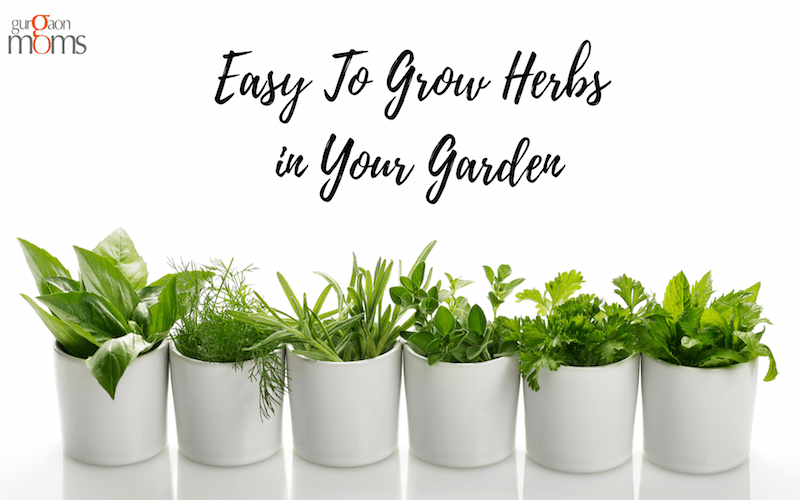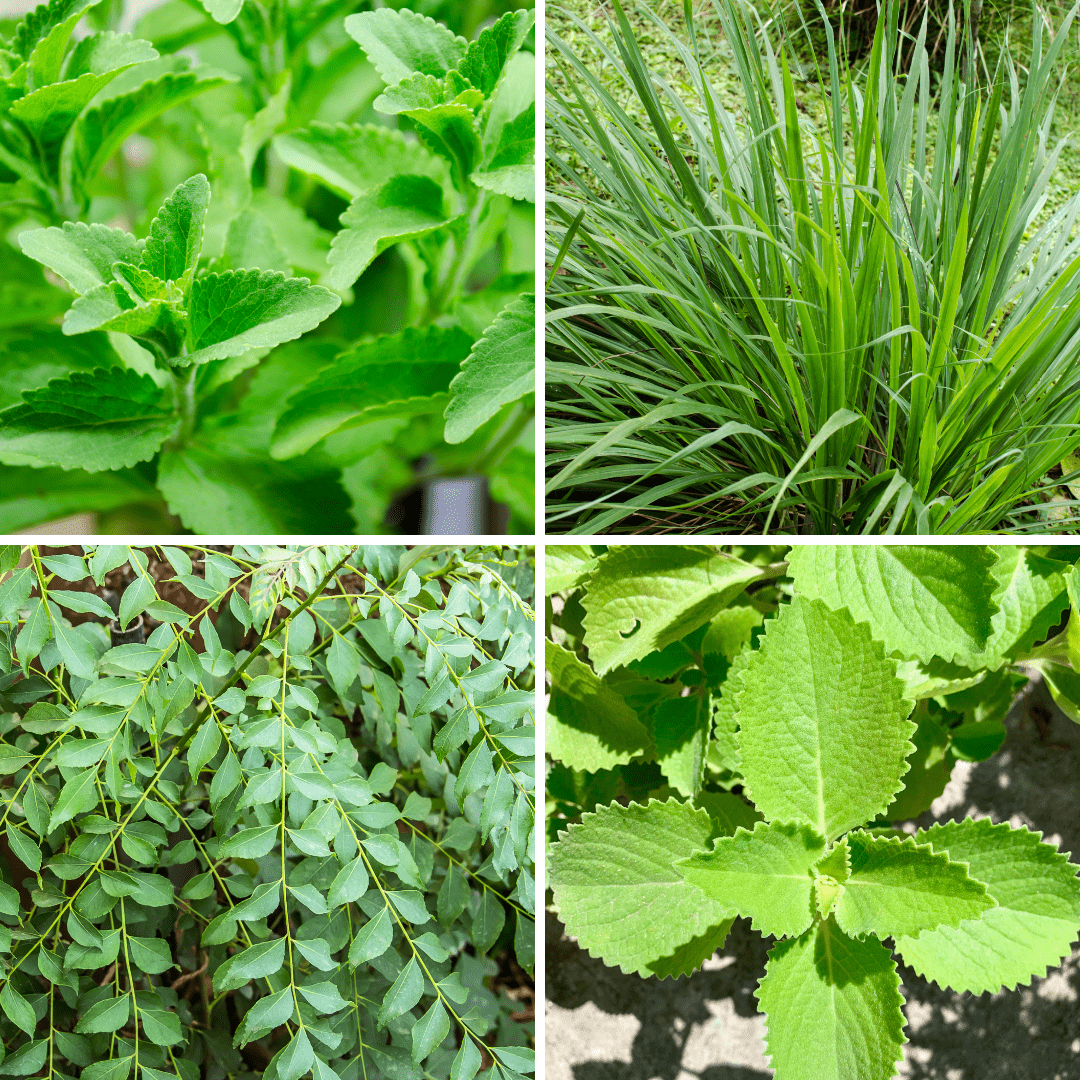HERBS-THE FOOD ENHANCERS
Nature has given us everything in abundance and our survival depends on it. We as humans, have also integrated ourselves and have found ways to discover, innovate, create and evolve from the various materials that it has given us. Right from having the knowledge about the five elements, to enhancing our taste buds, to finding out more about our palate and the plants require to augment our dishes, we have come a long way.
This is where Herbs come into the picture. It is interesting to note that in some herbs, the leaf is used, in some the stem and in some the root. There are many varieties of herbs that we can grow in our kitchen garden with ease. Some of them thrive throughout the year, wherein some others need specific temperatures.
I am sharing here some herbs which are easy to grow and what better than to use them straight from the garden. Believe me! That is a feeling that surpasses most others.
The list given below is quite extensive and yet, there are so many treasures that Nature is providing to us without asking anything in return.
GROWING YOUR OWN FOOD is something that I am extremely passionate about and I urge each and everyone to do the same. You can grow many things even in a small space and the results that you get are just amazing.
Most of the herbs, though are simple to grow, they require a perfect blend of temperature, water, sunlight and a conducive environment. To delve deeper into the world of herbs, one must learn to get their hands dirty or rather, be blessed by the base of what Nature is: the soil itself and it is in that moment that your whole world is going to change forever.
Herbs can be used for garnishing, making soups, using in salads, creating awesome dips and eating raw too. That additional tinge of flavour or the Tadka in your life is only because of these herbs. Let us explore this world further:
PARSLEY
(Usage: Leaf)
This is slightly bitter in taste. It provides a balance of flavour in the food. It also helps in digestion. It is known to be enriched with Vitamins A and C. It is easy to grow and stays throughout the year in slightly cooler climes.
GARLIC
(Cloves, root)
A wonder herb, it is used extensively in many kinds of cuisines. It is not liked by some, due to its pungent smell and taste.
It has medicinal properties, is known to be antimicrobial and helps in cancer too. It is easy to grow, the plant being similar to an onion.
GINGER
(Root)
Ginger has a strong taste, which some love and others cannot tolerate. It is used in almost all kinds of cuisines. It is also used in tea and other concoctions too. It is medicinal in nature and is also anti-microbial.
It helps in digestion, eases nausea and helps in motion sickness too. It is also antioxidative in nature. Growing ginger in your kitchen garden is easy and it can be grown from the root itself.
MINT
(Leaf/Stem)
This is an extremely versatile herb, with a gorgeous fragrance. It has multiple uses, like in chutneys, mojitos, iced tea and as a garnish. It is also used to water with citrus. Mint freshens your breath and it is also known to help in calming the gut. It is easy to grow all year round.
DILL
(Leaf)
Dill is another aromatic herb, used extensively over the world. It helps in digestion and is also known for its anti-inflammatory properties. It is extremely easy to grow.
It helps your garden to attract useful insects.
BASIL
(Leaf, Stem)
One of the commonest herbs is the sister of the Holy Tulsi. This herb is extremely popular and comes mainly in two forms, namely the Italian Basil and the Sweet basil. It is a must in Italian Cuisine. It has anti-oxidant properties and it also combats low blood sugar.
SAGE
(Leaf)
Sage is an aromatic herb, used in seasonings and also in sauces. It is easy to grow and stays for most of the year. It has an overpowering smell and one needs to be careful while using it. Dried sage leaves are used for cleansing the atmosphere, clearing the aura and creating a positive environment. It helps to relieve inflammation and heal cuts too. It is also thought to help with memory issues.
ROSEMARY
(Leaf)
Rosemary is one of the most flavourful herbs and is great for adding to many things. Around Christmas time, rosemary bushes are up for sale for planting in the spring. This plant is extremely fragrant and is often used plant in floral arrangements. Do not overwater this herb.
THYME
(Leaf)
Thyme is a delicate looking plant. It is used in most cuisines and also in used in soups and stews. It belongs to the mint family. The most common variety is the garden thyme, which has grey-green leaves and a minty and somewhat lemony smell.
CILANTRO / CORIANDER
(Leaf, Stem)
Cilantro or Coriander leaf, it is also named as Chinese Parsley. The lush green leaves are used as a garnish, for chutneys and in dressings too. The dry seeds are also used as a regular spice in cooking, both whole and crushed. It prefers colder climes to grow and it is then, that it grows profusely.
FENNEL
(Seed, Bulb)
Fennel is an aromatic herb, used as seed and as a stem too. It is used as a mouth freshener, served with sugar or mishri. The fennel bulb is eaten, either raw or sautéed or grilled. It is used in garnishing as well.
ARUGULA
(Leaf)
It has a peppery flavour and this comes from it being a part of the mustard family. It can be used in salads or as toppings too. You can also add it to pesto or pizza or pasta.
BAY LEAVES
(Leaf)
The fragrance reminds one of many things: mint, honey, balsam or of cloves. It leaves are dried and used in many cuisines, because of the additional flavour that it provides to the dish. The plant can be easily grown at home.
STEVIA
(Leaf)
Stevia is a pretty looking plant and a natural sweetener too. A part of the Sunflower family, it is liked by all because it has no calories. You can grow stevia in your garden in summers. One can use this instead of sugar.
LEMONGRASS
(Stalk)
The stalks provide us with antioxidants, like beta-carotene It is also used as a seasoning. Having a strong lemony flavour, it is used in green tea or can be just had with warm water. It is extensively used in Thai cuisine. It is known to help as a cancer defence and also in reducing eye inflammation.
OREGANO
(Leaf, Seed)
A must in Italian cuisine, it is an extremely flavourful herb. The leaves can be used for making dips and the seeds, for garnishing.
TURMERIC
(Root)
A definite for Indian cuisine, it is considered to be an antiseptic and an antioxidant. It has the capacity to help in relieving pain for people with arthritis, it provides relief in stomach infections. is a good digestive and is also anti-inflammatory in nature. It helps people with skin infections too,
ASHWAGANDHA
(Leaf)
It is also called as the Indian ginseng or the Indian winter cherry. It is used for its medicinal properties, especially in Ayurveda. It gives energy, helps in reducing anxiety and stress by reducing the cortisol levels and also, reduces pain and inflammation.
It can be taken as a supplement or mixed into smoothies, coffee, tea and desserts. In ancient times, it was taken with water, honey or ghee.
CURRY LEAVES
(Leaf)
The aroma is enough to create hunger pangs, whenever curry leaves are being used as a tempering. The leaves have medicinal properties and are powerhouses of flavour. The plant is easy to grow and becomes a tree soon enough
METHI
(Leaf, Seed)
Extremely flavourful, it can be used for making dry vegetables, in curries, as a filling for parathas, in dals etc. Methi seeds reduces cholesterol too. It has multiple medicinal properties. It also helps in reducing dandruff and controlling stomach infections. It can be easily grown in winters.
DILL
(Leaf)
It has a great taste and provides nutrition too. It requires to be well watered for faster growth. It is also cooked with potatoes and added to Sarson saag.
BRAHMI
(Leaf)
It is used to calm the nerves and provide a good night’s sleep. The oil can be used to provide relief from respiratory problems. It can be added to tea as well. It is also known to help with stomach problems. The plant grows from the stems itself.
Each and every herb is unique, with its multiple properties. Let us enjoy these with our food and enhance the taste of our food. The more we learn, the more we grow.







